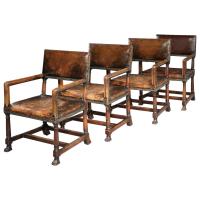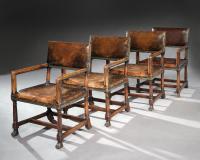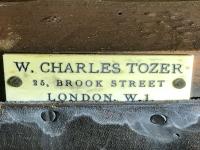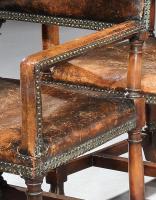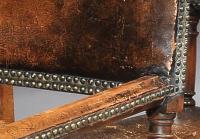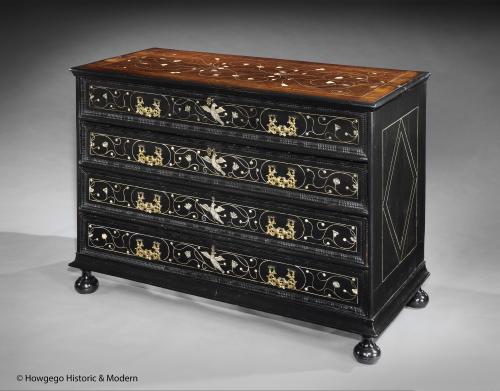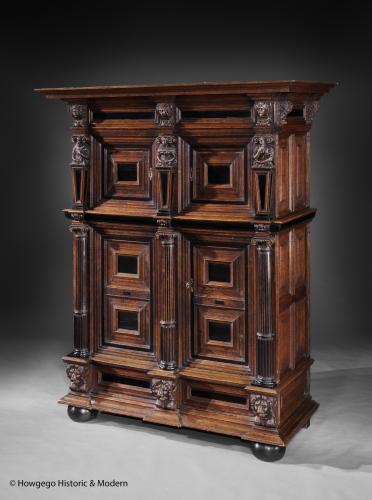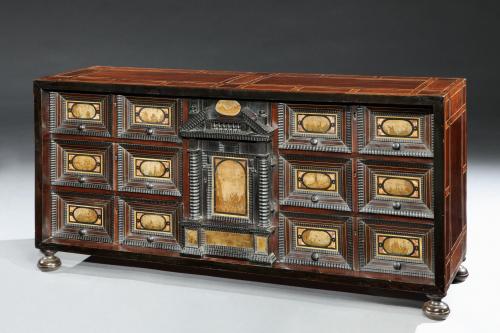
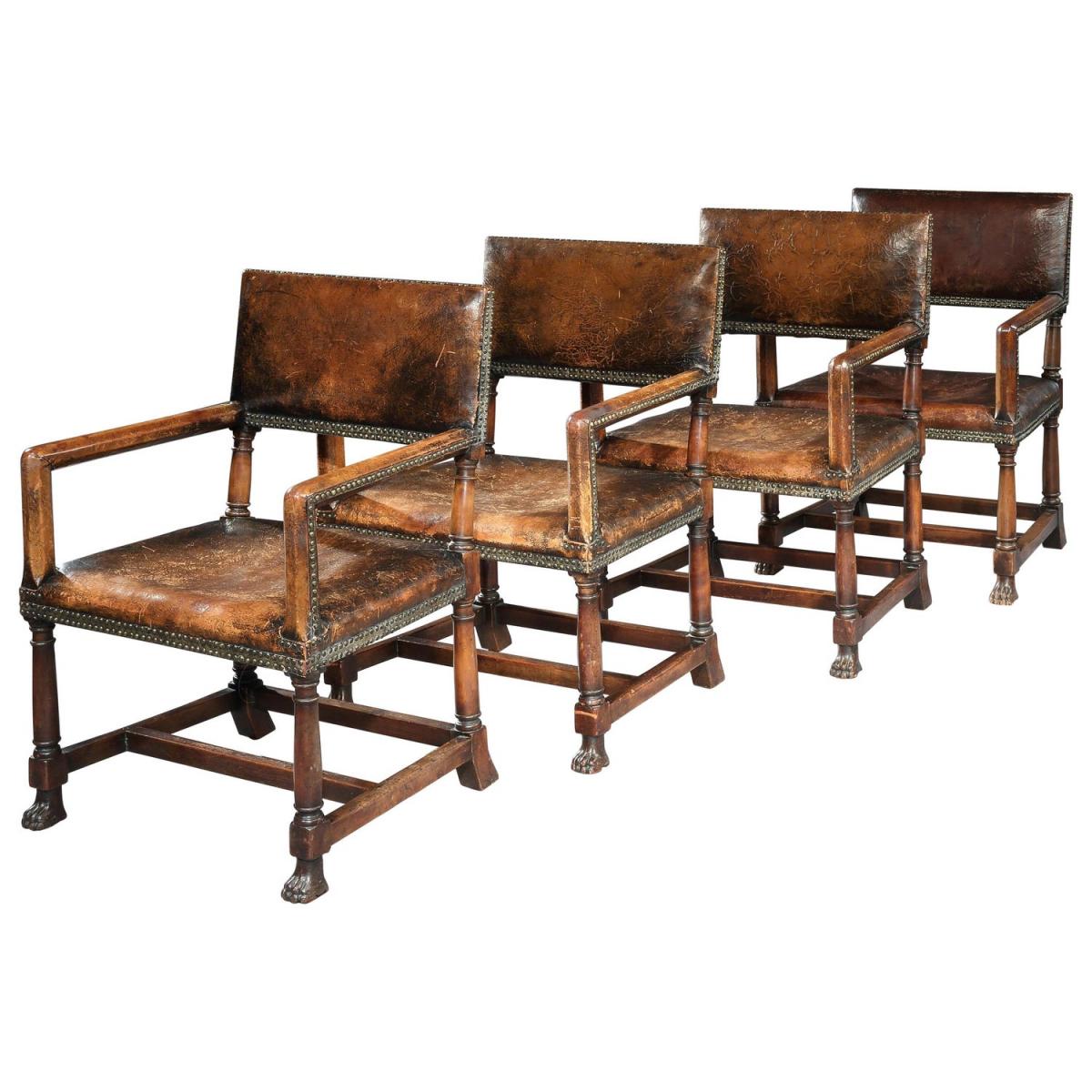
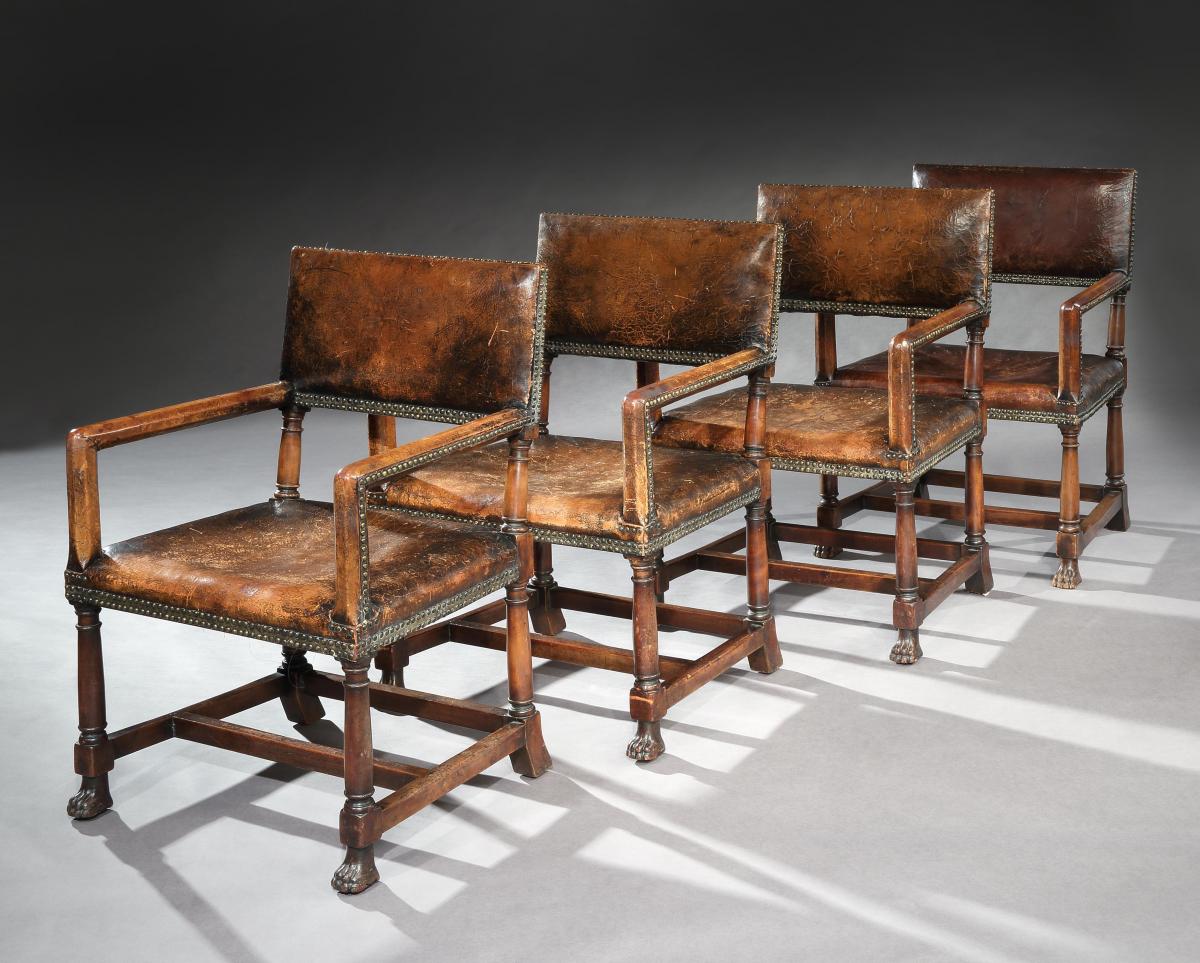
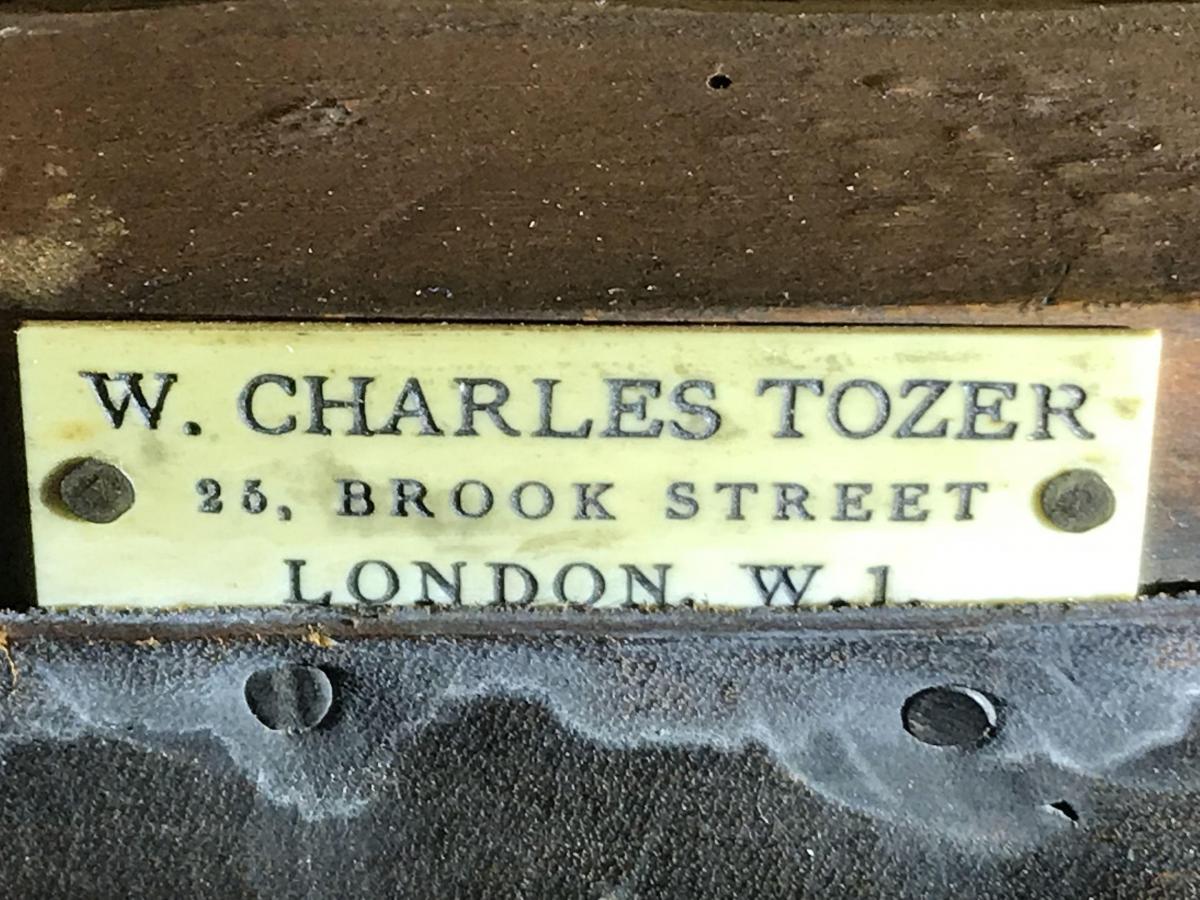
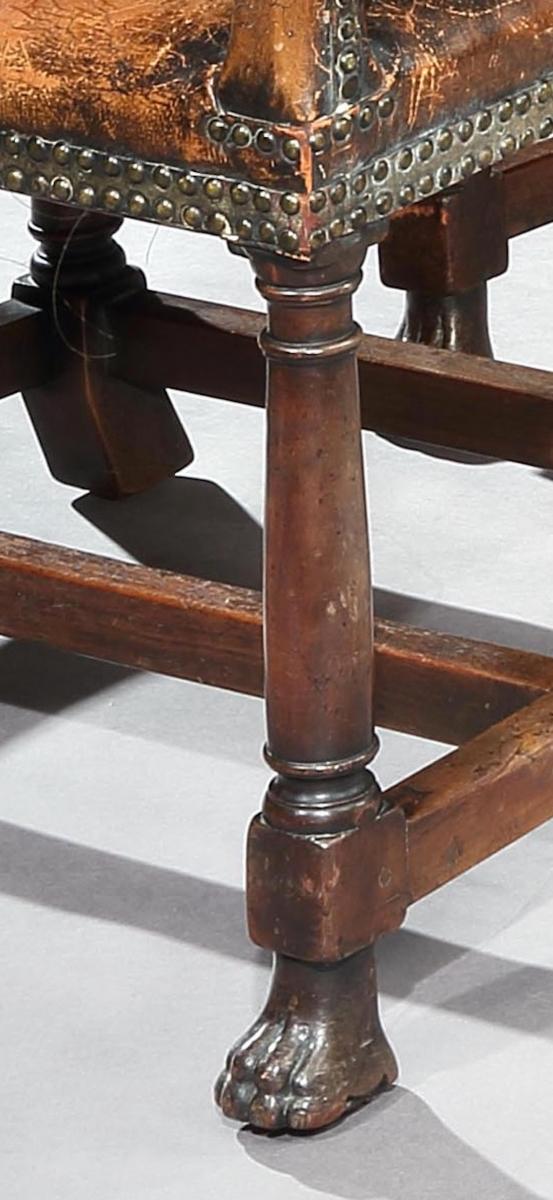
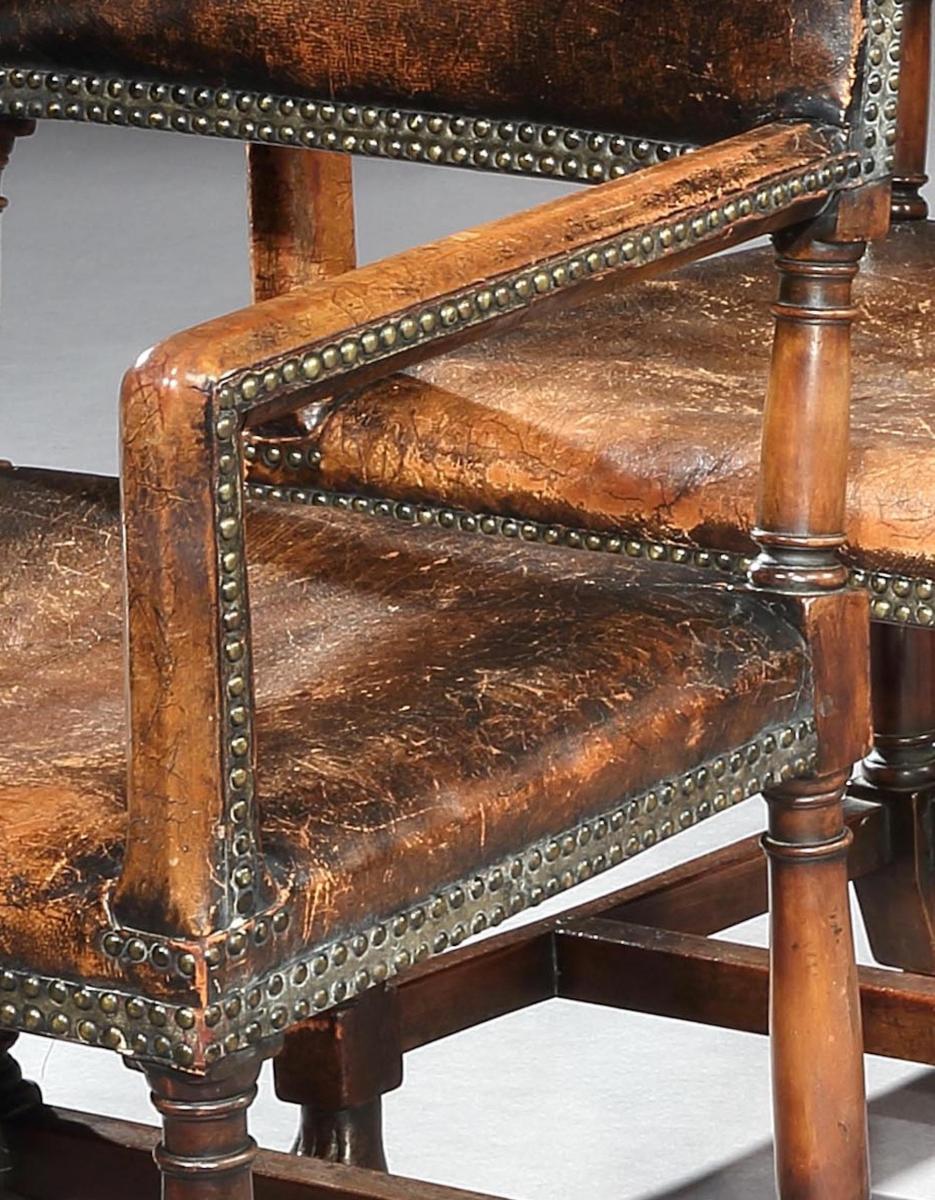
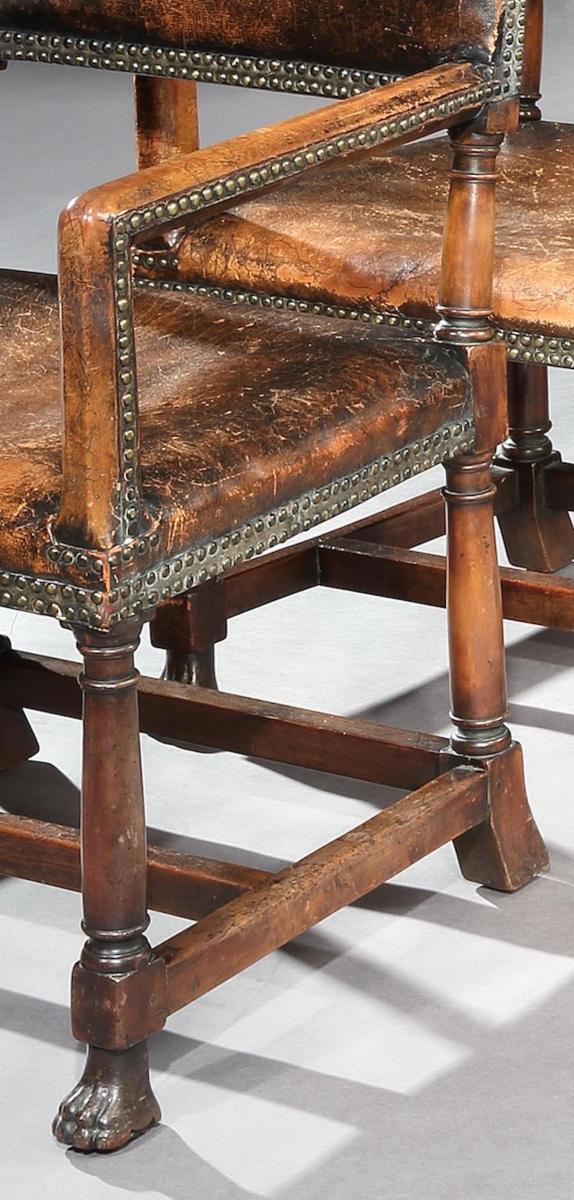
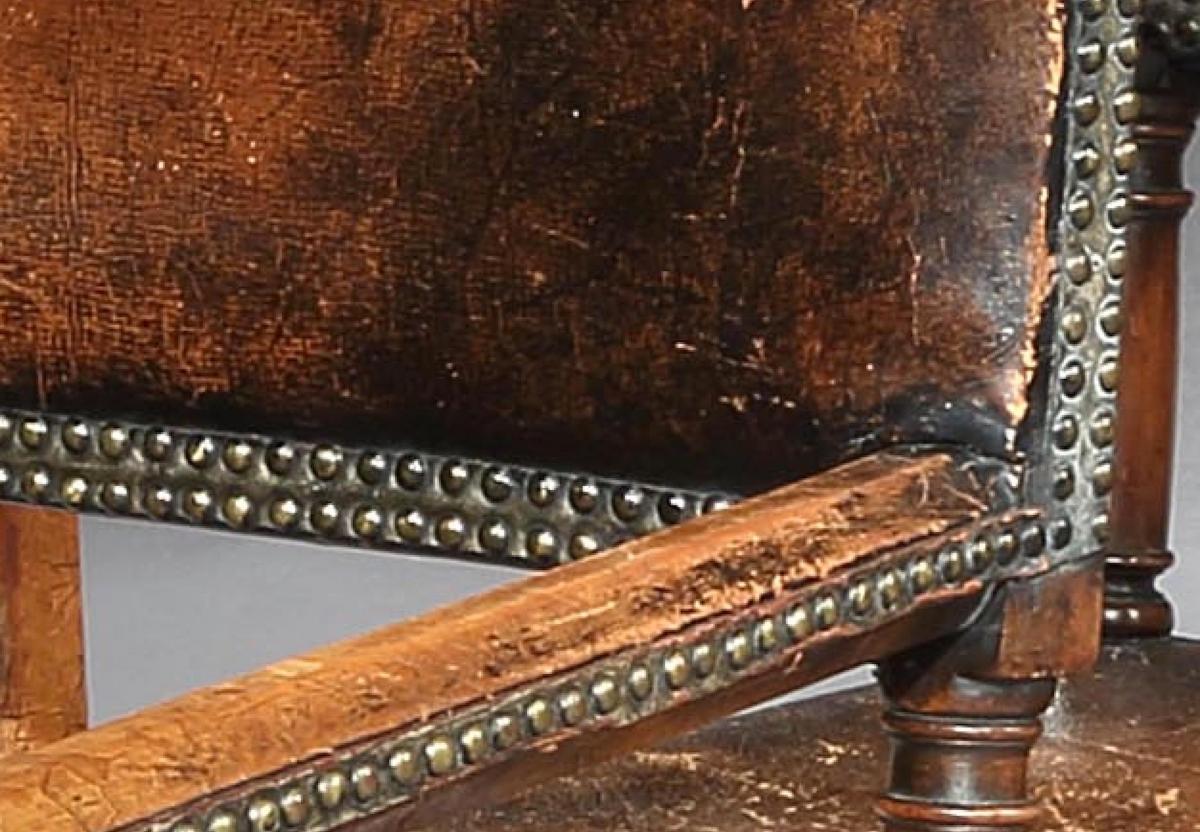
This object is eligible for a Certificate of BADA Provenance
The BADA Standard
- Since 1918, BADA has been the leading association for the antiques and fine art trade
- Members are elected for their knowledge, integrity and quality of stock
- Our clients are protected by BADA’s code of conduct
- Our dealers’ membership is reviewed and renewed annually
- Bada.org is a non-profit site: clients deal directly with members and they pay no hidden fees
These are in sound condition and very usable whilst retaining their integrity and character.
It is unusual for the arms to be fully upholstered and this feature adds to the comfort and gives the chairs a soft quality. The double-banded studwork is an unusual feature demonstrating the fine quality of these chairs. The paw feet create gravitas which together with their form and patina invokes the Renaissance mood. They inject atmosphere into any interior whether it is traditional or contemporary.
The upholstered backs, arms and seats are upholstered in the original brown leather which has a lovely patina and is still robust with some signs of wear which are customary for the use and age of the chairs. The leather is faced with double-rows of brass studwork around the backs and seats and single rows around the arms which create a decorative feature. The chairs are standing on shaped column-turned legs evoking the Renaissance-style joined by H-stretchers. The front legs on paw feet another Renaissance feature. Excellent original color and patina.
British, circa 1850
Measures: Back height 91cm., 3ft. Seat height 46cm.,18in, width 61cm, 2ft. Depth 50cm., 20in. High
Provenance: Labels to underside : W Charles Tozer, 25 Brook Street, London, W1.
Charles Tozer was a retailer of high-end, revivalist furniture trading from 25 Brook Street, London from the early-20th century into the 1960’s. The firm was known for the quality of their workmanship and materials and as one of the finest cabinetmakers specialising in early-Georgian & Queen Anne walnut revival furniture
25 Brook Street has had an illustrious history and is now the Handel & Hendrix museum. Handel moved into 25 Brook Street during the summer of 1723, probably encouraged by his court appointment to the Chapel Royal earlier that year. He was the first occupant of the house, which formed part of a four-building residential development by the speculative builder George Barnes (the current nos. 23, 25, 27/29, and 31 which no longer exists).
As a foreign national, Handel could not own property or take a long lease. After his British naturalisation in 1727 he decided to remain at Brook Street, renewing his short-term lease. In 1742 his annual rent for Brook Street was £50. Handel mainly composed and sometimes rehearsed from the house. He also conducted some business from the ground floor front parlour, for example, subscribers could collect their scores from Brook Street as well as opera season tickets. Handel died at the house on 14 April 1759.
In 1905 the art dealer C J Charles turned the house into a shop which he traded from for five years. From 1910, the house was occupied by Charles Tozer and his successors until 1975, during which time the first floor façade was re-instated (1953-4). After this, the building was occupied by antique dealers and, in the 1950s, by the Viyella textile company.
Dimensions
91.00cm high (35.83 inches high), 61.00cm wide (24.02 inches wide), 50.00cm deep (19.69 inches deep)The BADA Standard
- Since 1918, BADA has been the leading association for the antiques and fine art trade
- Members are elected for their knowledge, integrity and quality of stock
- Our clients are protected by BADA’s code of conduct
- Our dealers’ membership is reviewed and renewed annually
- Bada.org is a non-profit site: clients deal directly with members and they pay no hidden fees


